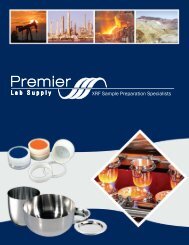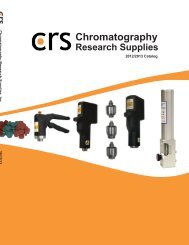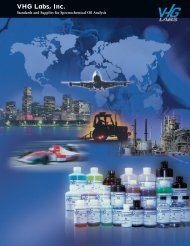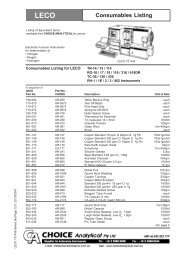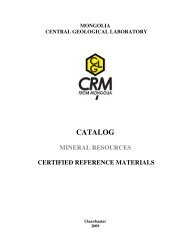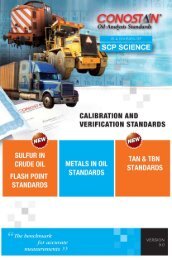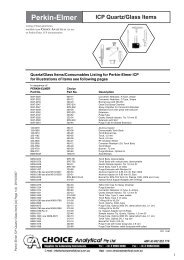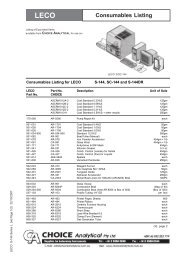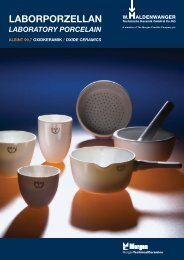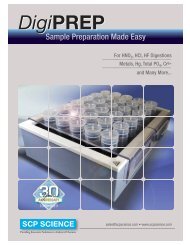You also want an ePaper? Increase the reach of your titles
YUMPU automatically turns print PDFs into web optimized ePapers that Google loves.
method, however, gravity does not slow the speed of theseparation as much.Another specialized method of separation is2-dimensional development. With this a single spot isapplied near a corner of the plates. After chromatographyin the first direction, the plate is dried, rotated 90° anddeveloped in the second dimension.with another mobilephase.Evaluation of the ChromatogramEvaluation can be as simple as a visual inspectionunder ultra violet light to determine the existence of acomponent. Or it could be as complicated as exposingthe plate to a chemical spray, followed by heat charringand densitometric scanning to compare the sampleto standards on the plate and achieve an accuratemeasurement of how much of a component is on theplate.Anyway you look at evaluation, the one constant is thecalculation of the retention factor (Rf value). This valueis measured as the relative distance traveled from thespot origin to the mobile phase solvent front. As longas all other variables are kept constant, the Rf value ofa sample component should remain constant and bereproducible.Inherent Advantages of TLCTLC permits the simultaneous analysis of many samplesin the same time period required for one HPLC analysis.Samples and standards are analyzed under exactly thesame conditions rather than serially as in HPLC.TLC uses a fresh, new adsorbent for each analysis. Thisinsures reproducible results and eliminates the HPLCproblems of adsorbent contamination from previousanalyses and lost efficiency from worn columns. Also,with the use of smaller developing tanks, the amount ofdeveloping solvent required is much less than with HPLC.TLC simplifies methods development. Unlike chromatographyperformed on columns, the sample components remain in theadsorbent and can always be located and retrieved for furtherexperimentation.Applications of TLCTLC is generally used for one of three purposes.1) QUALITATIVE AnalysisTo determine the presence or absence of a particularsubstance in a mixture. A rough estimation of the level of thesubstance may also be performed.2) QUANTITATIVE AnalysisTo determine, precisely and accurately, the amount of aparticular substance in a sample mix.3) PREPARATIVE AnalysisTo purify and isolate a particular substance by separating itfrom any contaminants.All three cases share the common procedures of sampleapplication, chromatographic separation, and samplecomponent visualization. The conditions under which theseprocedures are performed vary according to the required endresult. Some typical requirements and conditions are shownbelow.Factor Qualitative Quantitative PreparativeSample Volume 2-50µL 0.1-0.5µL 50-1000µLSample Amount 10-200µg 50-500ng 5-500mgSample Appl. Precision ±10% ±1% NALayer Thickness 250µm 150µm 500-2000µmDevelopment Distance 12 cm 5 cm 15 cmDevelopment Time 15-30 min 4-8 min 25-60 minVisualization Type Visual Visual &DensitometricVisualTLC does not require complex, costly maintainedinstrumentation. The investment for performing successfulTLC can be ten to one hundred times less than for HPLC.6



